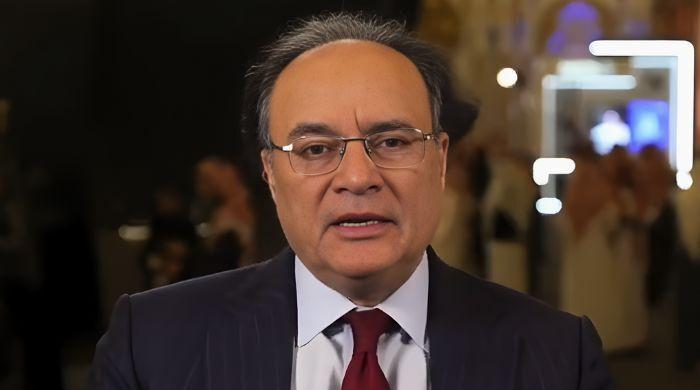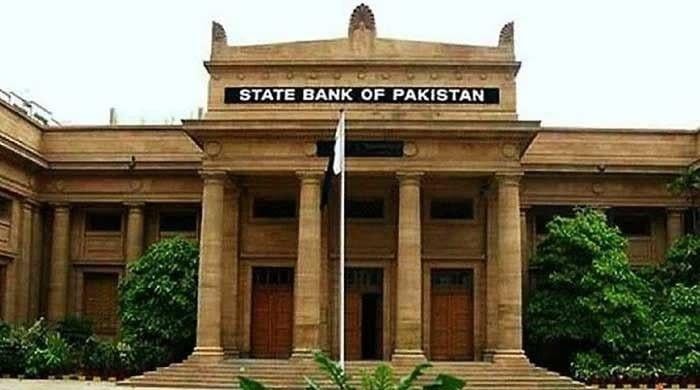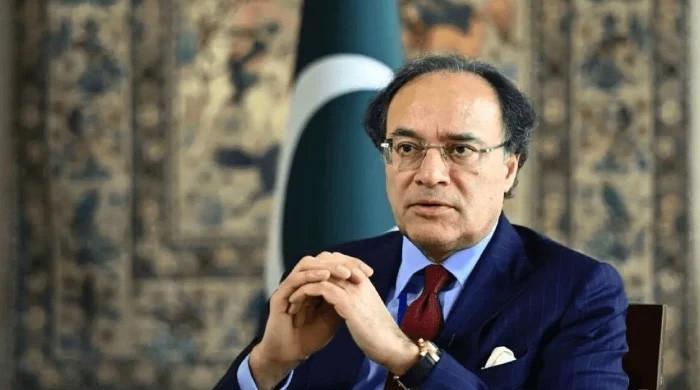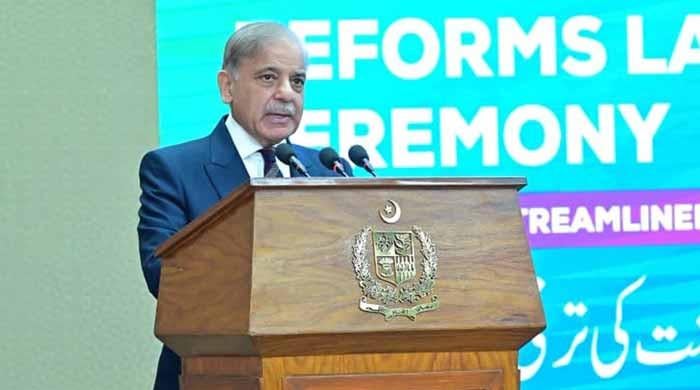Pakistan's unemployment rate rises to 7.1% in last five years: survey
KP reports highest unemployment rate; 14.8% graduates among those left without jobs
November 26, 2025
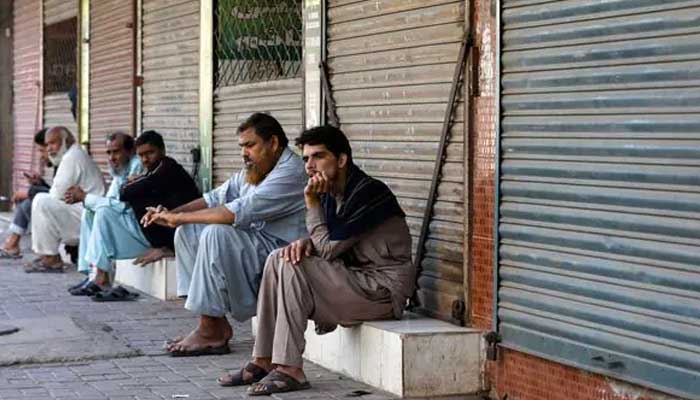
- Degree holders report 10.9% unemployment rate: survey
- LFS shows 59.4m males and 17.8m females among jobless.
- Female unemployment rate of 14.9% peaked in age group 25-34.
ISLAMABAD: Amid prevailing socio-economic woes faced by the country, unemployment is emerging as another challenge reflecting a hike in the last five years and reaching 7.1% in 2024-25 compared to the previous 6.3% in 2020-21, The News reported on Wednesday, citing the Labour Force Survey (LFS).
With the LFS highlighting an increase in unemployed persons from 4.51 million in 2020-21 to 5.9 million in 2024-25, the figures of unemployment rate — as per the 19th ICLS (New International Standards) — indicate that in LFS 2024-25, the highest unemployment rate is observed in KP (9.6%) followed by Punjab (7.3%), Balochistan (5.5%) and Sindh Province (5.3%).
The average monthly income increased from Rs24,028 in 2020-21 to Rs39,042 in 2024-25.
Federal Minister for Planning Ahsan Iqbal launched the LFS 2024-25 along with Secretary Planning Awais Manzur Sumra and Chief Statistician Pakistan Bureau of Statistics Dr Naeemuz Zafar, stating that the IMF programme compressed the demand and economic activities and secondly, Pakistan passed through two climate disasters, increasing the overall unemployment rate.
"The IMF programme curtailed the economy and prices went up but now macroeconomic stability had been achieved. Now the economic turnaround will generate jobs opportunities," the minister for planning said.
The minister again blamed the Pakistan Tehreek-e-Insaf (PTI)-led regime for derailing the economy during its 2018-2022 rule.
The number of unemployed persons has increased from (4.51) million in LFS 2020-21 to (5.90) million in LFS 2024-25. This represents an increase of (1.39) million. The rise is more obvious among males, with an increase of (0.79) million, compared to (0.59) million among females. The share of male unemployed persons decreased from 66.7% to 64.6%, while the share of female unemployed persons increased from 33.3% to 35.4%.
The overall unemployment rate is (7.1%) in LFS 2024-25, with rate of (6.0%) for male and (10.5%) for female. The highest unemployment rate is (12.9%) recorded among youth age group (15-24) followed by (8.3%) in the age group (25-34).
Female unemployment rate (14.9%) peaked in the age group (25-34) while male unemployment rate (12.5%) is the highest among age group (15-24). In contrast, in the age group (65+) had the lowest unemployment rate (0.8%).
The unemployment rate increased among individuals with no education (3.2% to 4.4%), below matric (4.9% to 6.0%), and intermediate from (11.7% to 12.5%). Conversely, unemployment rate decreased among those with education level matric (8.6% to 8.4%), degree holders (16.3% to 10.9%), and those with master, M.Phil. or PhD degrees (12.2% to 11.7%).
The highest unemployment rate in males is observed among those with intermediate-level education (9.7%), while alarmingly the highest unemployment rate in females is observed among those having degree-level or higher education (23.9%).Males accounted for (51.2%) of the working-age population but were overrepresented in the labour force, making up (75.0%).
In contrast, females comprised (48.8%) of the working-age population but were underrepresented in the labour force, accounting for (25.0%).
Furthermore, the share of male unemployed persons decreased from (66.7%) to (64.6%), while the share of female unemployed persons increased from (33.3%) to (35.4%).
The share of graduates among unemployed people is higher (14.8%) than employed people (8.9%). Among the literate employed labour force, more than 73.4% (seven out of 10) fall below the category of secondary education. The labour force of Pakistan is (83.14 million), KP (12.48 million), Punjab (48.15 million), Sindh (18.52 million) and Balochistan (3.98 million) in LFS 2024-25. The volume of labour force is more in the case of rural than urban areas in all provinces.
Total labour force increased from (71.76) million in LFS 2020-21 to (85.62) million in LFS 2024-25. This shows an increase of (3.5) million per annum.
The volume of labour force increases in KP (2.68) million, Punjab (7.54) million, Sindh (3.21) million and Balochistan (0.44) million respectively. The change in the provincial profile is more pronounced in the case of rural than urban areas.
The total employed population in Pakistan during 2024-25 is (77.2) million, comprising (59.4) million males and (17.8) million females.
Employment is predominantly rural, with (50.6) million employed persons compared to (26.7) million in urban areas.
Among the provinces, Punjab accounts for the largest share of employment (44.7) million, followed by Sindh (17.5) million, Khyber Pakhtunkhwa (11.3) million, and Balochistan (3.8) million. Female employment is notably higher in rural areas (14.2) million, particularly in Punjab (12.4) million.
The number of employed persons increased significantly, from 67.25 million in LFS 2020-21 to (79.73 million including 2.48 million own use producers) in LFS 2024-25, adding (12.48 million) individuals to the workforce.
This represents an average annual increase of (3.12 million) people in the employed labour force. The increase is more prominent in rural areas, with an addition of (6.99 million), compared to (5.49 million) in urban areas. The annual increase in rural areas is (1.7 million), while in urban areas it is (1.4 million).
Employment growth is observed in all the provinces, with notable increases in Khyber Pakhtunkhwa (2.39 million), Punjab (6.87 million), Sindh (2.85 million), and Balochistan (0.37 million) during the comparative periods.
Furthermore, in all the four provinces, the increase in male employment outpaces that of female employment. Overall, (33.1%) employed persons are engaged in agriculture, forestry, and fishing, followed by (16.0%) in wholesale and retail trade, (14.8%) in manufacturing, (9.9%) in construction, (6.6%) in transport, storage, and communication, and (17.9%) in community, social, and personal services.
A small share (1.6%) is employed in other sectors. Among males, the highest employment is in wholesale and retail trade (20.1%) and agriculture (24.5%), while for females, most (61.4%) are engaged in agriculture, followed by (20.3%) in community and social services.
Skilled agricultural, forestry and fishery workers constitute the largest group (30.2%) of the total employment in LFS 2024-25, followed by elementary occupations (17.7%), service and sales workers (16.7%), craft and related trades workers (13.2%), plant/machine operators and assemblers (8.1%), professionals (6.0%), technicians and associate professionals (4.1%), managers (2.2%), and clerical support workers (1.7%). Nearly six out of 10 female workers are engaged in agricultural activities (58.2%), and one out of 10 female work as professionals (10.3%), while the share of males is higher than females in all other occupations.
A comparative analysis reveals that the share of skilled agricultural workers (33.2%, 30.2%) and managers (2.5%, 2.2%) decreased, whereas the share of all other occupations increased.
As per the LFS 2024-25, out of 79.7 million employed labour force, 60.4 million (75.8%) are male. The main contributor to total employment is the informal (non-agriculture) sector, accounting for (46.8%) of all employment.
The formal (non-agriculture) sector accounted for (18.1%) of total employment and agriculture accounted for (35.1%) of total employment. Males are mostly employed in the informal (non-agriculture) sector (54.2%), followed by the formal (non-agriculture) sector with (20.0%).
Females are almost twice in informal (non-agriculture) sector (23.6%) compared to the formal (non-agriculture) sector which is (12.0%). The overall youth unemployment rate increased from (11.1%, 12.6%), male follows the same trend (10.0%, 12.3%), however the female youth unemployment rate decreased from (14.4%, 13.3%) in the comparative periods.
At provincial level, the unemployment rate has been increased in all the four provinces. Youth employment to population ratio has been increased (38.9%, 39.7%), female follows the same trend (18.8%, 20.2%), however, a decrease has been observed in male (58.2%, 57.5%).
At provincial level, youth employment to population has been increased in three provinces (KP, Punjab, and Balochistan) and decreased in Sindh. Youth Labour Force Participation Rate has increased at the national level (43.8%, 45.4%) and provincial level KP (37.9%, 39.9%), Punjab (46.3%, 48.3%), Sindh (43.5%, 44.1%) and Balochistan (38.2%, 40.7%).




